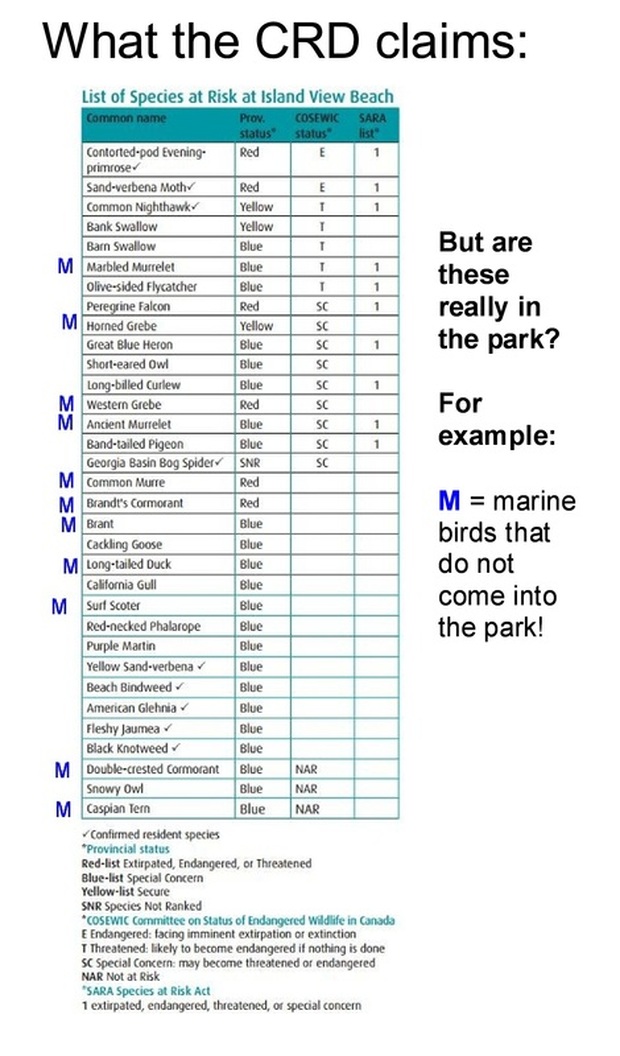
Species at risk in Island View Beach Regional Park
The CRD presentation claims throughout that there are 33 confirmed species at risk in Island View Beach Regional Park. In the park.
This is an example of the gross misrepresentation that has characterized the CRD claims over the last 4 years.
11 of the species listed by the CRD as in the park, are migratory marine birds that neither breed nor feed in the park. They do not come on land!
Of the 33 species listed, only 9 have a small tick made by the CRD, indicating these are a "confirmed resident species", and the CRD has now admitted that there only 9 species at risk in the park, not 33 as their web site claims.
Is the species at risk in the park?
It is not enough to say there is a "species at risk" in the park because that species while at risk elsewhere, may not be at risk in the park. The yellow sand verbena is an example of a "species at risk" that is flourishing in the park and needs no protection.
If the species is at risk in the park, can it be protected?
Risk to a species does not only come from human activities. The risk may be from sources that are not controllable:
The "species at risk" inventory should be prepared again, showing if
The CRD presentation claims throughout that there are 33 confirmed species at risk in Island View Beach Regional Park. In the park.
This is an example of the gross misrepresentation that has characterized the CRD claims over the last 4 years.
11 of the species listed by the CRD as in the park, are migratory marine birds that neither breed nor feed in the park. They do not come on land!
Of the 33 species listed, only 9 have a small tick made by the CRD, indicating these are a "confirmed resident species", and the CRD has now admitted that there only 9 species at risk in the park, not 33 as their web site claims.
Is the species at risk in the park?
It is not enough to say there is a "species at risk" in the park because that species while at risk elsewhere, may not be at risk in the park. The yellow sand verbena is an example of a "species at risk" that is flourishing in the park and needs no protection.
If the species is at risk in the park, can it be protected?
Risk to a species does not only come from human activities. The risk may be from sources that are not controllable:
- like eagle attacks on a heron colony;
- or the impact from an invasive species like the foreign grass that has taken root in the Contorted Pod Evening-Primrose habitat at the north eastern end of the park
- or the risk from rising sea level that would inundate the park with salt water and kill or drive away most of the "at risk" species there.
The "species at risk" inventory should be prepared again, showing if
- the species is present in the park;
- if it is at risk in the park;
- and if at risk can it be protected.